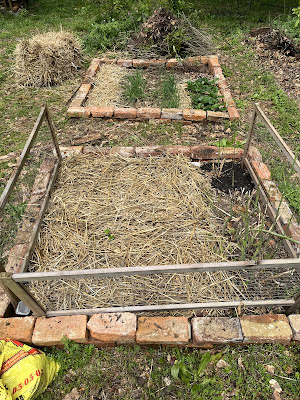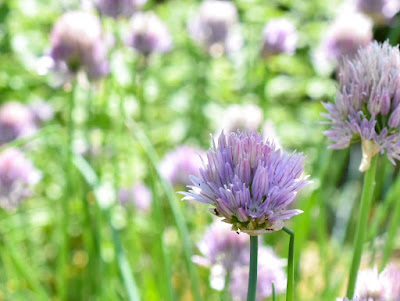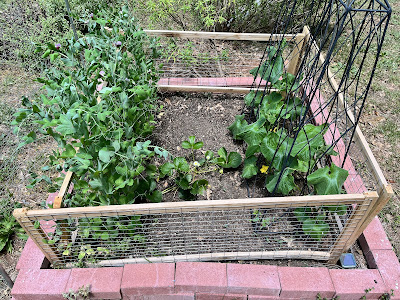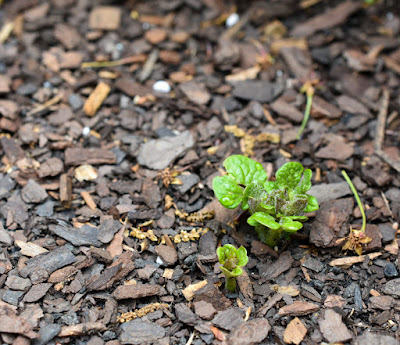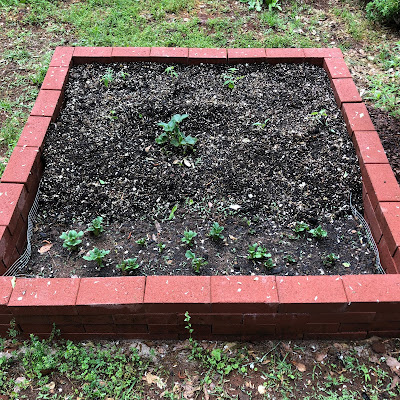I got a late start on my vegetable garden last year, which never gives me great results. I got a lot of peas, cucumbers, zinnias, and the little yellow tomatoes that grow like weeds (literally and figuratively) in my garden, but not much else. Some of the older raised beds fell apart, and the weed trees proliferated a little more among the herbs.
Thankfully gardens are always willing to give second chances.
I started by giving two of my beds new borders. I found a source of discarded bricks, and made a quick and dirty stacked border. I didn’t put all the effort I put into last year’s project of giving the bricks a sand foundation and making sure the walls were even, I just put them in place. I think they call this look “rustic.”
After cleaning out the weeds and seeing what space I had left, I decided on what I wanted to grow this year. First, the old favorites: dwarf peas, Yukon Gold potatoes, ‘Jedi’ & Shishito peppers, ‘Muncher’ cucumbers, Bush beans, and assorted tomatoes. Then, I decided to retackle two vegetables I loved but always had difficulty with: bell peppers and zucchini. This year I’m subbing out bell peppers for ‘Lunchbox’ peppers. I also planted some new strawberries after my few-years-old plants didn't come back this spring.
Another experiment this year: mulch. I've thought about mulching for many years, but never quite got around to deciding how I wanted to do it. This year I decided to try wheat straw. In the course of researching growing tips for asparagus, strawberries, peppers and zucchini, I thought they would all benefit from the moisture retention and weed suppression of mulch. Since my peas got a late start, I hoped some mulch would cool the soil down and keep them happier. I also once got a tip in the hardware store from a fellow customer that beans love being mulched with wheat straw. The Square Foot Gardening book by Mel Bartholomew also recommends preparing the soil with compost and fertilizer each fall and covering up the soil with mulch. I'm a little late for fall soil prep, but I went ahead and prepped and mulched everything a few weeks before planting.
After starting zucchinis indoors from seed I read that they prefer to be directly seeded outside. I carefully transplanted one outside this week, and I thought I would plant a second beside it next week. Hopefully one of them will be happy and take off. If they both die in the next few weeks, I have some extra seeds to plant.
Meanwhile, I'm enjoying watching everything sprout up!
 |
| Potato sprouts |
 |
| Asparagus in the garden |

